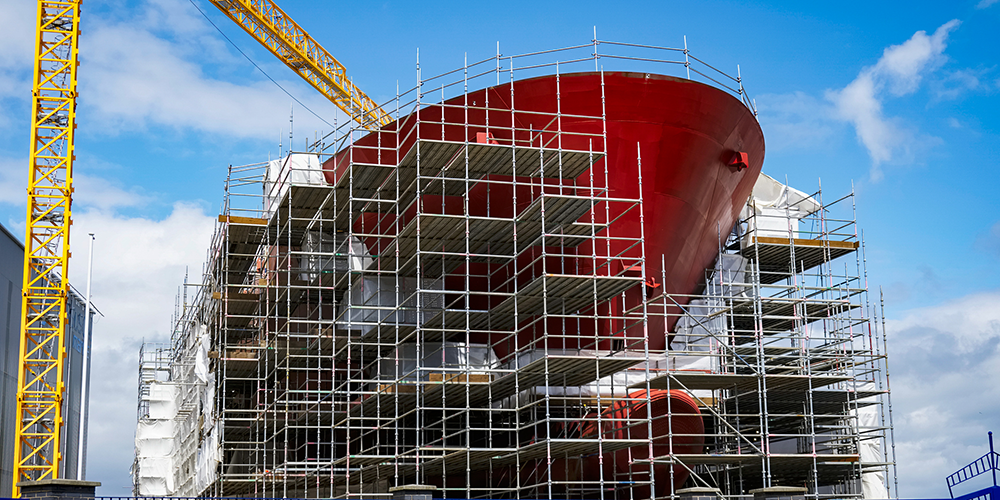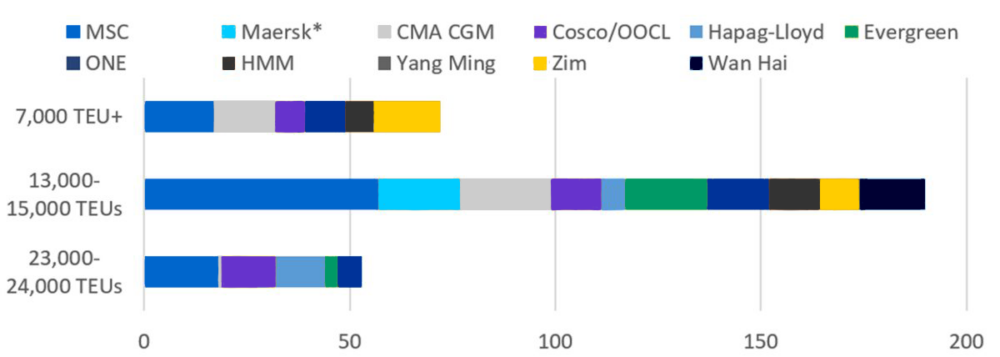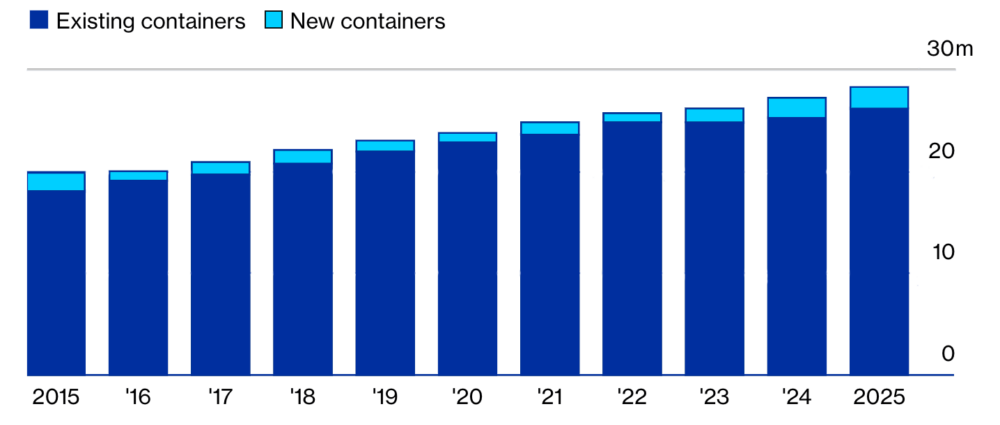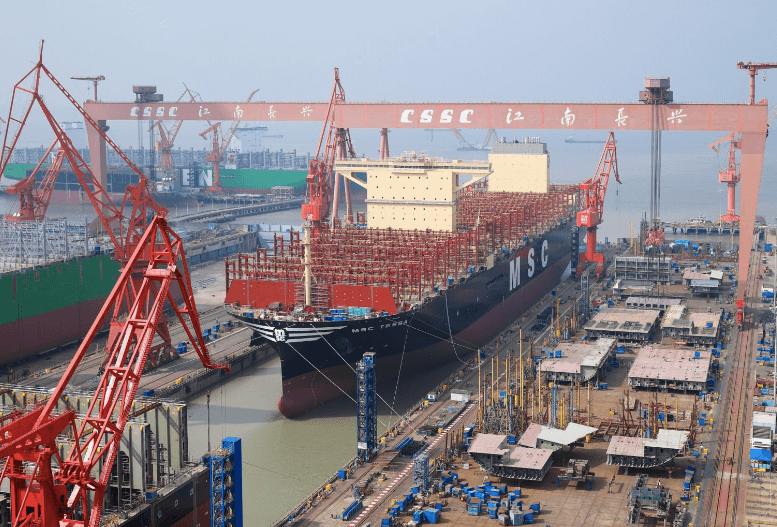
Enter your shipment number.
Influx of Newbuild Vessels Increases Global Capacity
The maritime industry is experiencing a massive, sustained influx of newbuild container capacity.
28 August 2023

Newbuild ships are typically ordered when the ocean freight market is peaking because that’s when companies have the financial resources to take on more risk. Container lines experienced some of their most profitable years ever during the pandemic, leaving many with spare cash to invest.
The maritime industry now faces a self-inflicted problem of oversupply. Many of these newbuild ships are now entering an environment with improved schedule reliability, soft demand, and less congestion. Massive increases in new ship deliveries demonstrate that the leading carriers once again succumbed to a boom-and-bust shipping cycle.
S&P Global data shows that ship owners and operators will receive new vessels with a combined capacity of approximately 2.6M TEU in 2023, an 11% increase from the current global capacity.
Linerlytica expects full year deliveries to reach 2.2M TEU in 2023, a new annual delivery record, surpassing 2015’s previous high of 1.7M TEU.
The current orderbook shows newbuild vessels with a cumulative capacity of roughly 6.6 million TEU—almost 30% of the world’s total service fleet—will be delivered in 2024-2025.
Notably, one of the top five carrier groups—MSC, Maersk, CMA CGM, Cosco, and Hapag-Lloyd—will own or charter over 55% of the newbuild order capacity. MSC alone has 90+ vessels in its shipbuilding pipeline that are slated for deployment on mainline trade lanes.
Top 11 Carriers: Newbuild Ships by Size

Source: FreightWaves based on Alphaliner data
Clarksons’ historical data shows that annual net fleet growth averaged 970,000 TEUs from 2001-2020, whereas deliveries in 2023-2024 will be 2.6x higher than that average.
Global Container Capacity

Source: Drewery Maritime Research (2022-25 are projections)
Bigger is Better?
Over time ocean carriers have introduced progressively larger containerships, with an emphasis on ultra-large container ships (>20,000 TEU), and neo panamax ships (12,000-16,000 TEU). Hudong Zhonghua shipyard’s recent delivery of the MSC Tessa—the world’s largest container ship with an overall capacity of 24,000 TEU—reiterates this growing trend. Overall, the container capacity of the largest container ship now exceeds the largest ship from 10 years ago by 60%!

Many newbuild vessels also incorporate alternative or dual-fuel fuel capabilities, allowing carriers to remain prepared for impending environmental regulations. Carriers also recognize that new vessels are generally more fuel efficient than older tonnage, and fuel efficiency remains critical for their bottom line since fuel is usually a leading expense.
How Will the Market Respond?
Multiple, leading data sources expect the supply glut to grow the world’s net fleet capacity and subsequently impact ocean freight rates. It’s also important to note that newbuild orders have not slowed down significantly. South Korea’s five major shipbuilding companies all surpassed their initial order targets for 2022, and the country’s leading ship manufacturers have already secured over $7B in new orders since the beginning of 2023.
So, how will ocean freight rates be impacted? This will depend on if the influx of capacity is slowed, and it could be as aging vessels are dispatched to scrapyards and orders are delayed or canceled.
